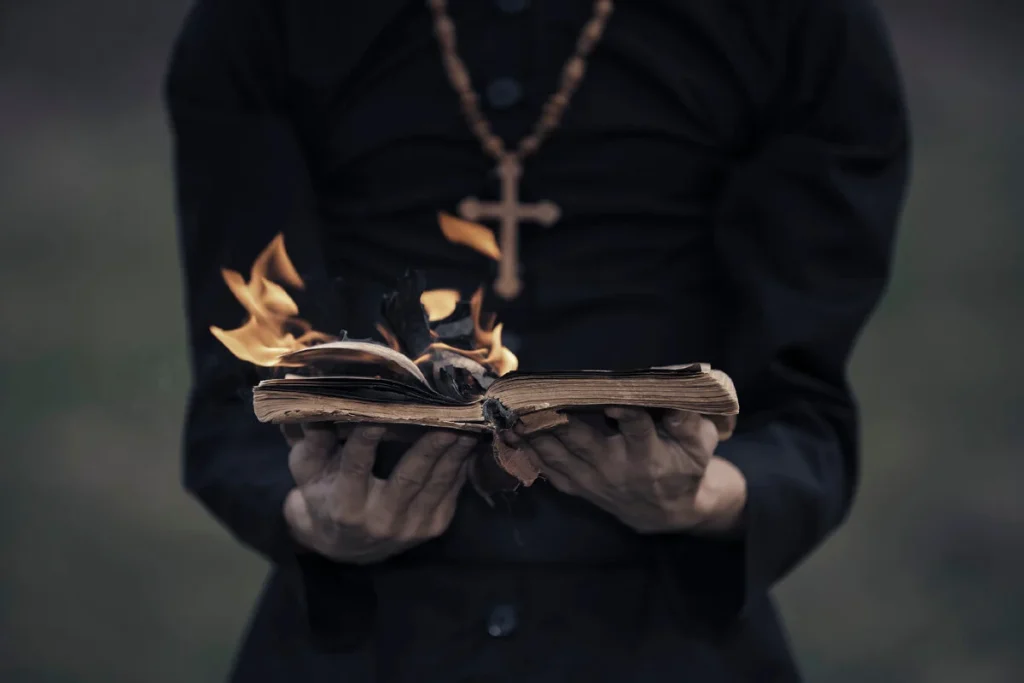Witchcraft and Christianity have shared a complex relationship throughout history. While the two belief systems often appear contradictory, they have coexisted in various forms, leading to a diverse tapestry of perspectives and practices. In this article, In Witch Symbols, we will delve into the historical context, examine the conflicting beliefs, and explore the modern interpretations of the intersection between witchcraft and Christianity.
Historical Context of Witchcraft and Christianity
Ancient Roots: Witchcraft and Christianity, both ancient and enduring, have woven an intricate tapestry throughout history. In the ancient world, diverse magical practices coexisted with polytheistic beliefs in civilizations such as Mesopotamia, Egypt, Greece, and Rome. As Christianity spread, it encountered these mystical traditions, leading to a fusion of beliefs and practices that formed the basis of many magical rituals.
Medieval Europe and the Christian Witch: The Middle Ages witnessed intense tension between witchcraft and Christianity. The Church’s influence was immense, leading to the infamous witch hunts, where anyone deviating from Christian doctrines was persecuted. During this time, the term “witch” became synonymous with evil, and thousands, primarily women, suffered under the Church’s accusations.
The Renaissance, Enlightenment, and Christian Mysticism: The Renaissance brought a revival of ancient magical practices from ancient witches, blending Christian mysticism with esoteric knowledge. The Enlightenment, however, ushered in skepticism, challenging superstitions, and witch hunts. In the 19th century, secret societies like the Hermetic Order of the Golden Dawn emerged, combining elements of mystical Christianity with witchcraft. In the 20th century, the concept of the “Christian witch” emerged, embodying the synthesis of both belief systems.
Colonial America and Spiritual Duality: In the American colonies, Puritans, driven by their strict Christian beliefs, conducted infamous witch trials, showcasing the deep-rooted fear of witchcraft. Even in the New World, the perceived threat of witchcraft persisted, often leading to tragic consequences for those accused.
Modern Pluralism and the Christian Witch Movement: In contemporary times, society embraces religious pluralism and interfaith dialogue. This openness has given rise to a diverse community, including Christian witches, who find harmony between their Christian faith and magical practices. The Christian witch movement advocates for the coexistence of witchcraft and Christianity, emphasizing positive magic, healing, and personal empowerment within a Christian framework.
Understanding this rich history illuminates the fascinating interplay between witchcraft and Christianity, revealing the depth of human spirituality and the continuous evolution of beliefs in our complex world.
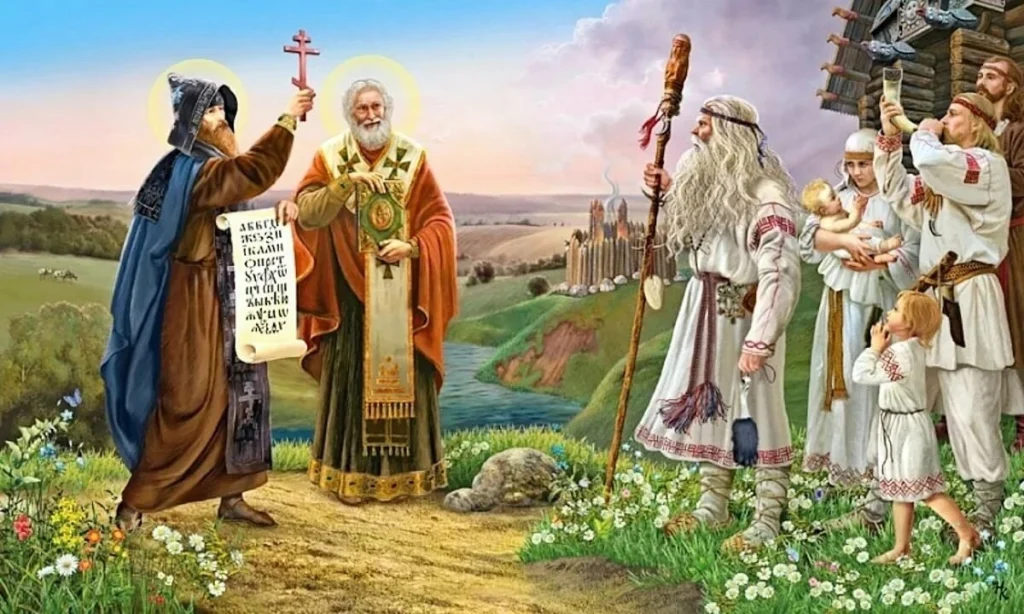

Read More: Witchcraft in Islam
The Witch Hunts
The witch hunts, a chilling chapter in history, unfolded predominantly between the 15th and 18th centuries in Europe and its American colonies, revealing a complex interplay of witchcraft and Christian beliefs deeply intertwined with societal fears.
- Origins of the Witch Hunts: The origins of the witch hunts can be traced to a convoluted blend of factors. The increasing influence of the Church, coupled with societal anxieties and superstitions, set the stage for widespread fear of witchcraft. Papal decrees and religious proclamations from the late Middle Ages propagated the notion that witchcraft posed a significant threat to Christianity. Consequently, local authorities, often driven by religious fervor, systematically hunted down those suspected of practicing witchcraft.
- Methods of Persecution: Accusations of witchcraft often relied on flimsy evidence, including hearsay, personal vendettas, or mere eccentricities in behavior. Torture was frequently used to extract confessions, leading to many innocent individuals admitting to crimes they never committed. The accused were believed to have made pacts with the devil, granting them the ability to perform malevolent magic. Commonly cited “evidence” included marks on the body, so-called “witches’ teats,” and the ability to float when thrown into water. Sadly, these dubious signs led to countless executions, with women, in particular, being the targets due to deeply ingrained societal biases.
- Impact on Society: The witch hunts cast a long, dark shadow over European society, tearing apart communities and leaving them shrouded in fear and suspicion. Neighbors turned against neighbors, and family members accused one another. The economic consequences were severe, as properties confiscated from the accused often benefited both accusers and the Church. This period of intense persecution created an atmosphere of dread, forever altering the social fabric and leaving a lasting impact on the collective memory.
- Legacy and Lessons: As society progressed and Enlightenment ideals gained prominence, the witch hunts eventually waned. However, their legacy endures, serving as a stark reminder of the complex relationship between witchcraft and Christianity, as well as the dangers of unchecked fear and prejudice. The witch hunts underscore the importance of critical thinking, tolerance, and justice. They stand as cautionary tales, urging humanity to confront the darkest aspects of its history and work collectively towards a future marked by understanding, compassion, and justice for all, regardless of beliefs.
One of the most infamous chapters in the relationship between witchcraft and Christianity is the European witch hunts of the late Middle Ages and Early Modern period. Thousands of people, mostly women, were accused of practicing witchcraft and were persecuted and executed. The Church played a significant role in these persecutions, which were based on the belief that witches made pacts with the devil.
Conflicting Beliefs
The dynamic interplay between witchcraft and Christianity has long been characterized by conflicting beliefs, showcasing a rich tapestry of contrasting ideologies within both spiritual realms, as most think there is only dark witchcraft, which people use to cause harm.
1-Biblical Condemnations and Christian Perspectives: Within Christianity, certain biblical passages, notably Exodus 22:18 and Galatians 5:19-21, explicitly condemn witchcraft and sorcery. The Church historically viewed witchcraft through a lens of heresy and devil worship, often associating it with malevolent practices and supernatural pacts, deepening the chasm between Christian doctrines and magical traditions.
2-Witchcraft as Nature-Based Spirituality: Modern witchcraft, represented by various traditions like Wicca, embodies a nature-based spirituality. Practitioners of witchcraft often perceive their craft as a harmonious connection with nature, embracing rituals and spells that tap into Earth’s energies. For them, witchcraft is a celebration of the natural world, contrasting sharply with certain Christian views that label it as a threat to orthodox faith.
3-Christian Witches and Syncretic Harmony: The emergence of Christian witches highlights attempts to reconcile these disparate beliefs. Christian witches navigate this tension by interpreting biblical passages in ways that emphasize love, healing, and benevolent magic. They view their practice as an extension of their Christian faith, exploring the mystical within a framework of Christian spirituality. This synthesis, however, challenges traditional Christian teachings, leading to theological debates and diverse interpretations.
4-Interpreting the Divine and Challenges of Reconciliation: At its core, the tension between witchcraft and Christianity arises from divergent interpretations of the divine and the supernatural. Christianity underscores a personal relationship with God through prayer and worship, while witchcraft often emphasizes connections with natural forces and spirits. Navigating these differences remains a significant challenge for those seeking harmony between the two belief systems.
5-The Ongoing Dialogue: In the midst of these conflicting beliefs, individuals continue to engage in thoughtful dialogue, fostering understanding and tolerance. Interfaith discussions and open-minded conversations facilitate a deeper exploration of the intricate relationship between witchcraft and Christianity. Such exchanges promote acceptance, allowing diverse spiritual paths to coexist and highlighting the evolving landscape of faith and belief in our complex world.
Christianity, particularly in its more conservative forms, has historically viewed witchcraft as heretical and demonic. The Bible contains verses condemning sorcery and witchcraft, contributing to the tension between the two belief systems. However, interpretations of these verses vary widely among different Christian denominations, leading to diverse perspectives on the issue.
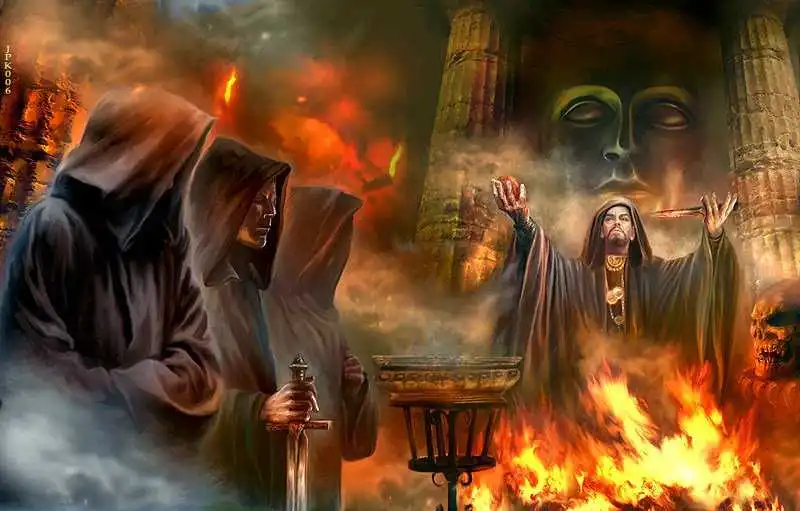

Modern Perspectives
In contemporary times, the relationship between witchcraft and Christianity has entered a new phase, characterized by diverse and nuanced perspectives that reflect the changing landscape of spirituality and belief systems.
- Christian Witches and Eclectic Spirituality: One notable modern development is the rise of Christian witches, individuals who identify both as followers of Christ and practitioners of witchcraft. For them, these seemingly contradictory paths coexist harmoniously. These Christian witches reinterpret traditional biblical teachings, emphasizing the love, healing, and empowerment aspects of Christianity while incorporating magical practices rooted in nature and ancient wisdom. Their existence challenges conventional religious boundaries, sparking debates within both the Christian and witchcraft communities.
- Christian Wicca and Harmonious Synthesis: Another intriguing phenomenon is the emergence of Christian Wicca, a movement that seeks to blend elements of Wiccan practices with Christian spirituality. Adherents of Christian Wicca often incorporate rituals, ceremonies, and magical traditions into their Christian faith, viewing the natural world as a divine creation that can be tapped into for spiritual growth. This syncretic approach attempts to bridge the gap between Earth-based magical traditions and Christian beliefs, encouraging practitioners to explore both realms simultaneously.
- Interfaith Dialogue and Mutual Understanding: Moreover, modern perspectives on the relationship between witchcraft and Christianity emphasize interfaith dialogue and mutual understanding. Interfaith initiatives provide a platform for practitioners from both sides to engage in respectful conversations, fostering empathy and respect for diverse beliefs. Through these dialogues, individuals from Christian and witchcraft backgrounds can explore common ground, dispelling misconceptions and building bridges between these historically divergent paths.
- Personal Empowerment and Positive Magic: In contemporary witchcraft, there is a growing emphasis on personal empowerment and positive magic, irrespective of religious affiliations. Many practitioners focus on healing, self-discovery, and harnessing natural energies for benevolent purposes. This approach transcends religious boundaries, allowing individuals from various faith traditions, including Christianity and witchcraft, to explore their spirituality in a way that aligns with their personal beliefs and values.
- Embracing Complexity and Diversity: Modern perspectives underscore the complexity of the relationship between witchcraft and Christianity. As society becomes increasingly pluralistic, there is a growing acceptance of diverse spiritual practices. The coexistence of these beliefs reflects the evolving nature of faith and spirituality, encouraging individuals to embrace the richness of their own experiences while respecting the beliefs of others. In this multifaceted landscape, the dialogue between witchcraft and Christianity continues to evolve, encouraging individuals to explore the depths of their spirituality and celebrate the diversity that makes our world vibrant and unique.
In contemporary times, the relationship between witchcraft and Christianity has become more nuanced. Some Christian denominations have embraced aspects of witchcraft, emphasizing harmony with nature and healing practices. This movement, often referred to as Christian Wicca or ChristoPaganism, seeks to reconcile Christian faith with pagan traditions.
Moreover, there are individuals who identify as both Christian and practicing witches, integrating elements of both belief systems into their spiritual lives. They argue that witchcraft can coexist with Christian teachings, focusing on positive magic, healing, and personal empowerment.
Read more: Banish the Dark Arts: Effective Black Magic Removal Techniques
Interfaith Dialogue
Interfaith dialogue has emerged as a pivotal force in shaping modern perspectives on the intricate relationship between witchcraft, Christianity, and the unique identity of Christian witches. This open exchange of beliefs and ideas serves as a bridge, connecting individuals from diverse spiritual backgrounds and fostering a deeper understanding of each other’s faith traditions.
A Platform for Dialogue:
Interfaith dialogue provides a safe and respectful platform for practitioners of witchcraft, Christianity, and Christian witches to engage in meaningful conversations. These discussions encourage participants to share their beliefs, practices, and experiences openly. Christian witches, in particular, find a unique space within these conversations, as they navigate the complex terrain between their devotion to Christ and their magical practices, inviting enriching discussions about faith, spirituality, and the human connection with the divine.
Dispelling Misconceptions:
One of the significant benefits of interfaith dialogue is its ability to dispel misconceptions. Christian witches, in particular, often face misunderstanding from both traditional Christian communities and mainstream witchcraft practitioners. Through dialogue, these misconceptions are addressed, allowing for a more nuanced understanding of the intricate balance Christian witches strive to achieve in harmonizing their Christian faith with their magical practices.
Building Empathy and Respect:
Interfaith dialogue cultivates empathy and respect among participants. Christian witches, by engaging in dialogue with practitioners from various spiritual paths, gain insights into the diverse ways people connect with the spiritual realm. Similarly, individuals from other faith traditions learn about the deep-rooted spirituality and sincerity that characterize Christian witchcraft. This mutual respect serves as a foundation for tolerance and acceptance, encouraging practitioners to celebrate their differences while honoring their shared humanity.
Celebrating Diversity:
Interfaith dialogue celebrates the diversity of beliefs within the broader spiritual community. Christian witches, with their unique blend of Christianity and witchcraft, contribute to this diversity by adding layers of complexity and richness to the dialogue. Through these conversations, participants recognize the beauty in the tapestry of beliefs, appreciating the multifaceted nature of spirituality and the myriad ways people seek meaning and connection in their lives.
Promoting Peaceful Coexistence:
Ultimately, interfaith dialogue promotes peaceful coexistence and harmony among individuals with differing beliefs. Christian witches, through their participation in these discussions, exemplify the potential for reconciliation between seemingly contrasting faith traditions. By fostering understanding and acceptance, interfaith dialogue paves the way for a more tolerant and inclusive society, where individuals can practice their beliefs freely while appreciating the spiritual journeys of others.
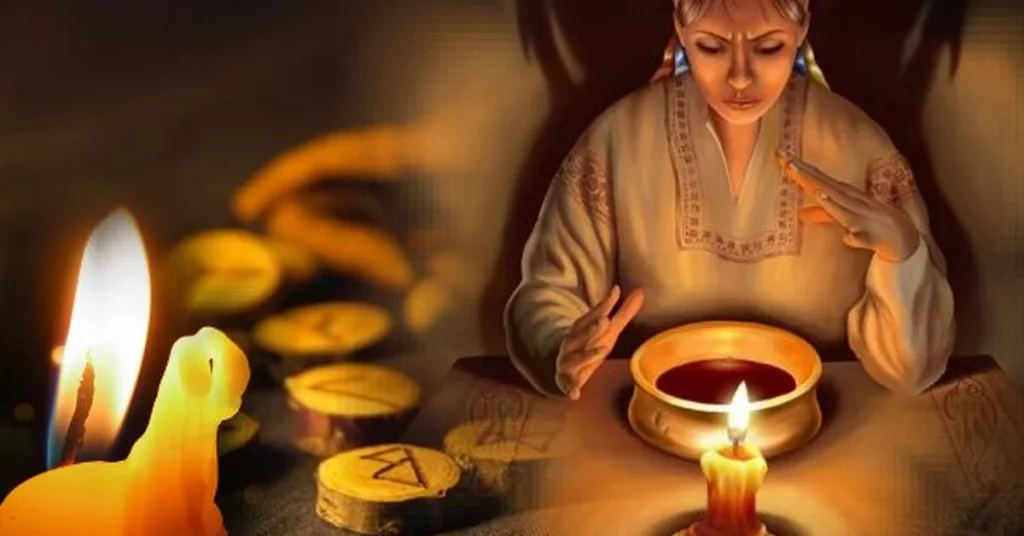

Recommended Books about Witchcraft and Christianity
Here are some recommended books and articles that delve deeper into the relationship between witchcraft and Christianity:
Books:
- “The Witch’s Book of Shadows” by Phyllis Curott
- “Christian Wicca: The Trinitarian Tradition” by Nancy Chandler Pittman
- “Witches and Jesuits: Shakespeare’s Macbeth” by Garry Wills
- “Christianity and the Craft: A Primer on Wicca and Witchcraft” by Joyce Higginbotham and River Higginbotham
- “The Witch in the Cathedral: A Meditative Guide for Pagans and Christians” by John Dominic Crossan and Sarah Sexton Crossan
- “The Witch’s Shield: Protection Magick and Psychic Self-Defense” by Christopher Penczak
- “The Witch’s Book of Power” by Devin Hunter
- “Witchcraft and Christianity: The Story of My Redemption” by Doreen Irvine
- “ChristoPaganism: An Inclusive Path” by Joyce and River Higginbotham
- “The Witch’s Athame: The Craft, Lore & Magick of Ritual Blades” by Jason Mankey
Articles:
- “Christian Witches: The Mix of Religion and Magick” by Mat Auryn (Patheos)
- “Christian Witchcraft: What Is It and Is It Real?” by Laura Tempest Zakroff (Medium)
- “Christian Witches: The Witches that Worship God” by Jason Mankey (Patheos)
- “Christian Witches: A Growing Movement in America” by Anna Swartz (Vice)
- “The Christian Witch’s Creed” by Christopher Penczak (Witchvox)
- “The Hidden History of Witches and the Christian Church” by David Salisbury (The Wild Hunt)
- “Christian Witchcraft: Fact or Fiction?” by Mat Auryn (Patheos)
- “Christian Witchery: An Oxymoron?” by Sarah Anne Lawless (Sarah Anne Lawless Blog)
- “The Christian Witch: A Modern Synthesis of Magic and Faith” by Aaron Leitch (Llewellyn)
- “The Christian Witch: Modern Interfaith Practice” by Caroline Kenner (The Witches’ Voice)
Please note that it’s always a good idea to read from a variety of sources and perspectives to gain a comprehensive understanding of the topic.
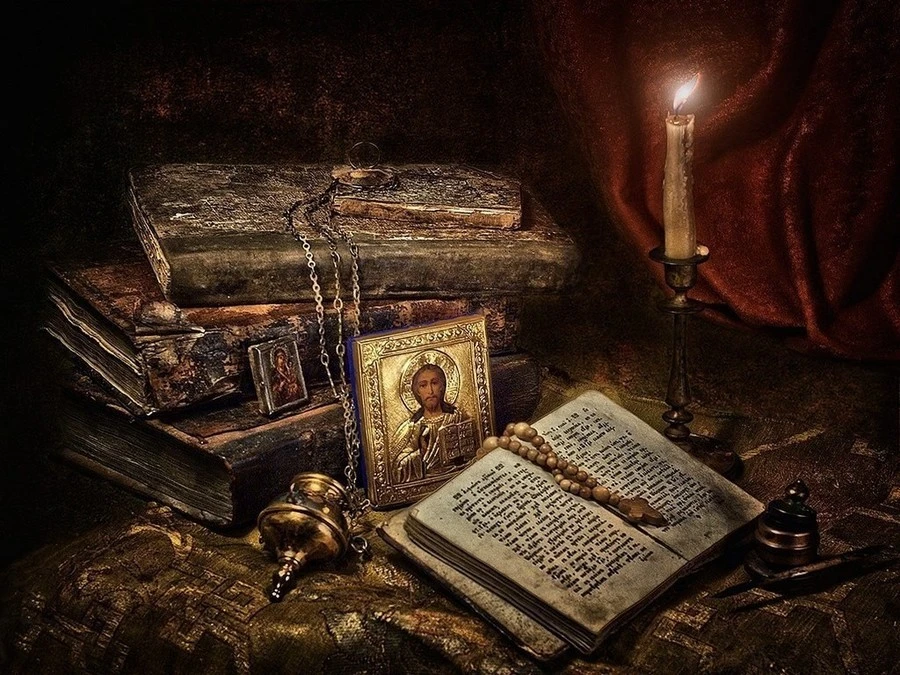

Where does the Bible say, “Suffer not a witch to live”?
The phrase “Suffer not a witch to live” is found in Exodus 22:18 of the Old Testament. This verse is often cited as a biblical justification for the persecution of witches, particularly during the time of the European witch trials. However, it is important to understand the historical and cultural context of the verse. In ancient times, witchcraft and sorcery were associated with practices that were seen as sacrilegious and idolatrous. The verse should be interpreted within its historical context and with consideration for the broader message of the Bible regarding love, compassion, and seeking God’s guidance.
How did witchcraft affect religion?
Witchcraft has influenced religion in various ways throughout history. In some ancient cultures, witchcraft was a respected practice associated with healing or spiritual connections. However, with the rise of Christianity in Europe, witchcraft became demonized and associated with heresy and devil worship. This led to the persecution of individuals accused of witchcraft, particularly during the European witch trials of the 15th-18th centuries. The fear and persecution of witches influenced religious beliefs, leading to the association of witchcraft with evil and the Devil in Western religious traditions.
Read More: Witchcraft in the Bible: Definition and Facts
What does the Bible say about magic?
The Bible has several verses that address the practice of magic or sorcery. In the Old Testament, Exodus 22:18 states, “You shall not allow a sorceress to live.” Leviticus 19:26 also condemns the practice of divination and magic. In the New Testament, Galatians 5:20 includes sorcery as one of the works of the flesh. Overall, the Bible discourages the use of magic or sorcery, associating it with idolatry and the worship of false gods.
What does the Bible say about Halloween?
The Bible does not specifically address the celebration of Halloween, as it is a relatively modern holiday with pagan origins. Halloween traces its roots to ancient Celtic festivals, specifically Samhain, which marked the end of the harvest season and the beginning of winter. Some Christians choose not to celebrate Halloween due to its pagan associations, while others see it as a secular holiday focused on costumes and community activities. Christians often have different perspectives on the holiday and its suitability within their individual beliefs.
Final Thoughts
The relationship between witchcraft and Christianity is multifaceted, shaped by historical events, conflicting beliefs, and evolving perspectives. While the historical persecution of witches cannot be ignored, contemporary society offers a more diverse and inclusive space for individuals to explore their spiritual beliefs.
In our ever-changing world, characterized by a mosaic of beliefs and traditions, the necessity for respectful dialogue has never been more crucial. As society becomes increasingly pluralistic, the tapestry of human spirituality is woven from threads of various colors and textures, each representing a unique worldview and cultural heritage. In this intricate weave, the relationship between witchcraft and Christianity stands as a testament to the complex interplay of beliefs that have shaped human history.

